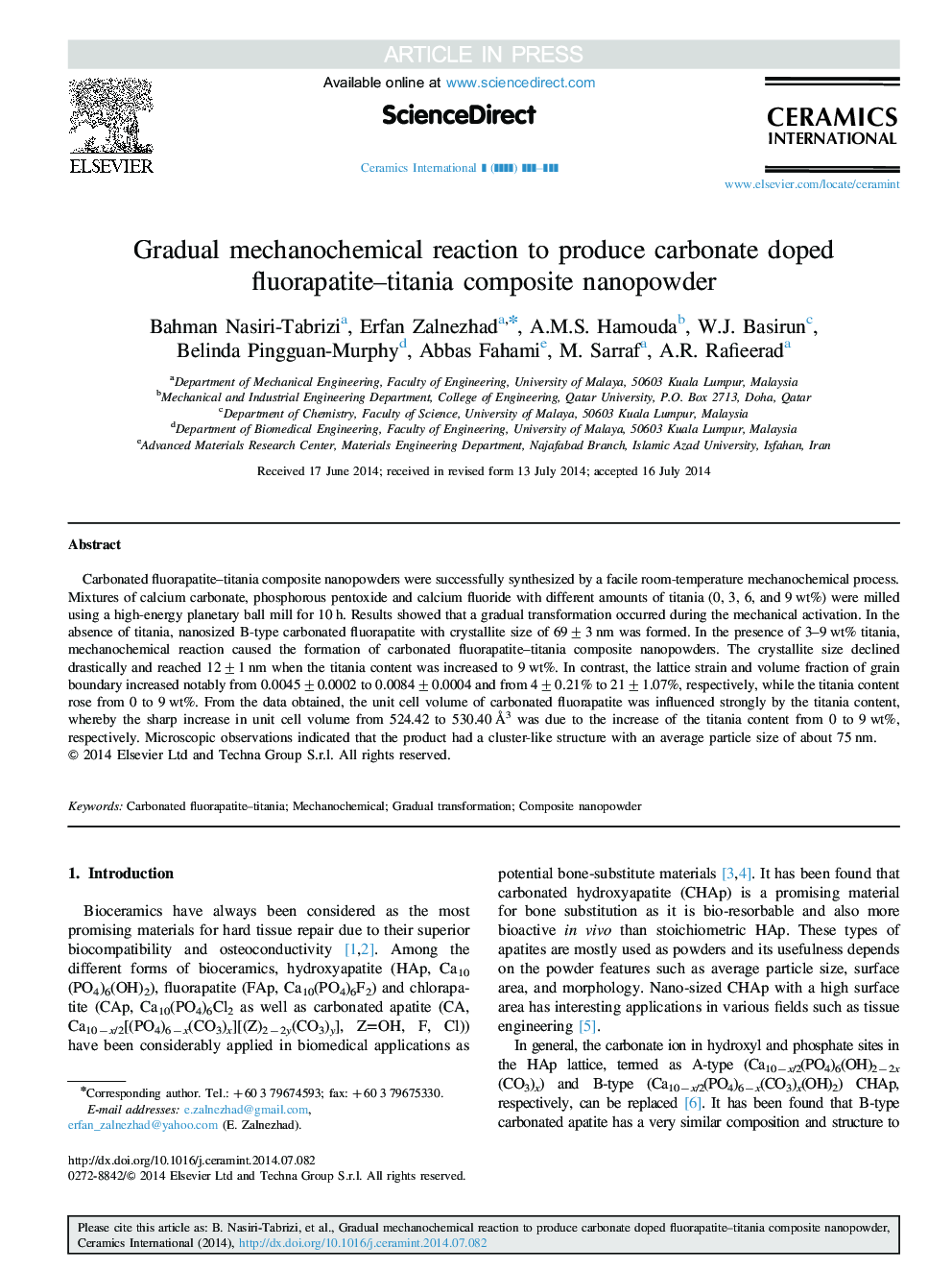| Article ID | Journal | Published Year | Pages | File Type |
|---|---|---|---|---|
| 10624859 | Ceramics International | 2014 | 9 Pages |
Abstract
Carbonated fluorapatite-titania composite nanopowders were successfully synthesized by a facile room-temperature mechanochemical process. Mixtures of calcium carbonate, phosphorous pentoxide and calcium fluoride with different amounts of titania (0, 3, 6, and 9 wt%) were milled using a high-energy planetary ball mill for 10 h. Results showed that a gradual transformation occurred during the mechanical activation. In the absence of titania, nanosized B-type carbonated fluorapatite with crystallite size of 69±3 nm was formed. In the presence of 3-9 wt% titania, mechanochemical reaction caused the formation of carbonated fluorapatite-titania composite nanopowders. The crystallite size declined drastically and reached 12±1 nm when the titania content was increased to 9 wt%. In contrast, the lattice strain and volume fraction of grain boundary increased notably from 0.0045±0.0002 to 0.0084±0.0004 and from 4±0.21% to 21±1.07%, respectively, while the titania content rose from 0 to 9 wt%. From the data obtained, the unit cell volume of carbonated fluorapatite was influenced strongly by the titania content, whereby the sharp increase in unit cell volume from 524.42 to 530.40 Ã
3 was due to the increase of the titania content from 0 to 9Â wt%, respectively. Microscopic observations indicated that the product had a cluster-like structure with an average particle size of about 75Â nm.
Keywords
Related Topics
Physical Sciences and Engineering
Materials Science
Ceramics and Composites
Authors
Bahman Nasiri-Tabrizi, Erfan Zalnezhad, A.M.S. Hamouda, W.J. Basirun, Belinda Pingguan-Murphy, Abbas Fahami, M. Sarraf, A.R. Rafieerad,
